The evolution of iPhone: See changes from the original ahead of iPhone 15's unveiling
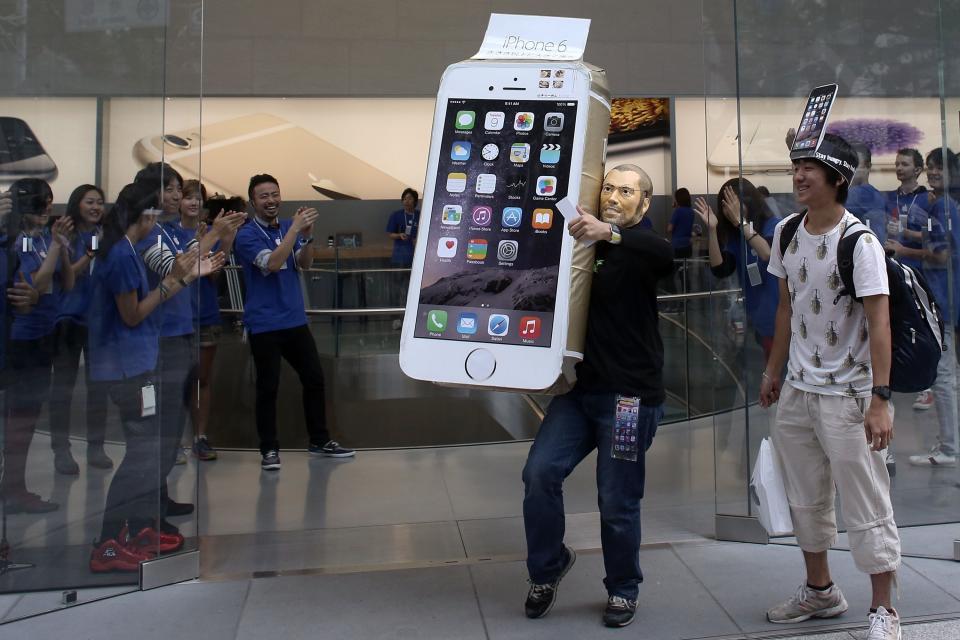
A new iPhone is on the horizon. Apple announced late last month that the new iPhone 15 will be revealed on Sept. 12 at 1 p.m. ET., causing a stir of speculation as to what is in store for the latest model.
In July, Apple CEO Tim Cook announced a number of Apple devices and apps, including mixed reality headsets, new health features for the Apple Watch, the addition of FaceTime to Apple TV and more.
Of course, we won't know for sure what the iPhone 15 looks like until Tuesday afternoon, when the announcement is made at "Wonderlust" on the Apple campus. However, Apple's many releases over the past 16 years have followed a pattern, giving a glimpse into what could be coming down the pipeline.
Apple event 2023: iPhone 15, Apple Watch rumors ahead of Tuesday's 'Wonderlust' event
From the original iPhone to the soon-to-be-released 15, here's how the phones have evolved over time.
iPhone
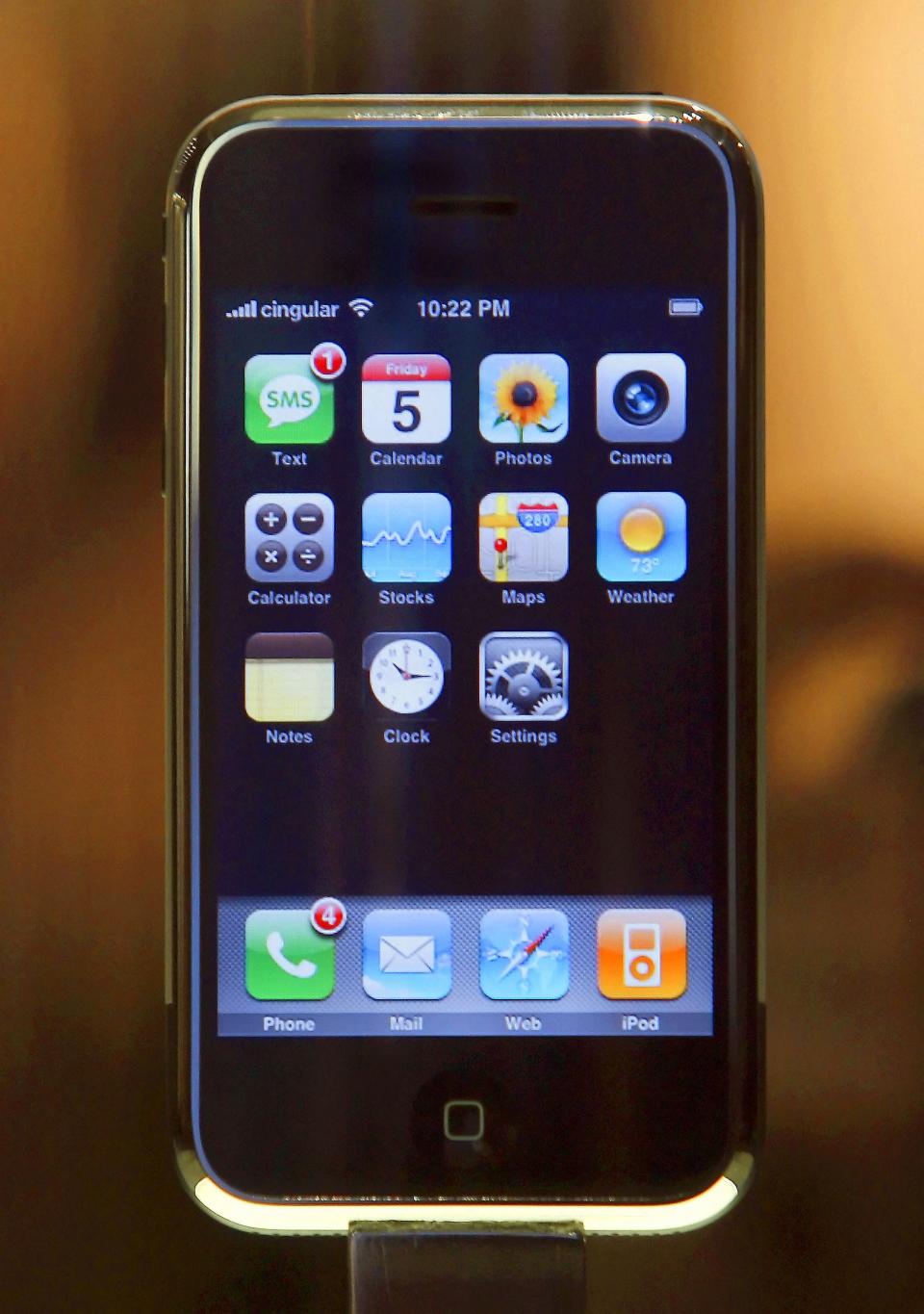
The original iPhone broke ground in 2007 when Apple co-founder and CEO Steve Jobs revealed it at the MacWorld expo. While it wasn't technically the first commercially billed smartphone, it was the first to resemble the devices of today with a touch screen and full web browsing capabilities, launching a revolution in mobile devices. While it only had basics apps such as Mail, a camera, Safari browser, and YouTube, Apple sold over 6 million units.
At launch, a 4 GB model sold for $499, while the 8 GB model sold for $599.
When you can buy Apple's newest: When can you buy the new iPhone 15? Apple announces release date for iPhones, watches
iPhone 3G and 3GS
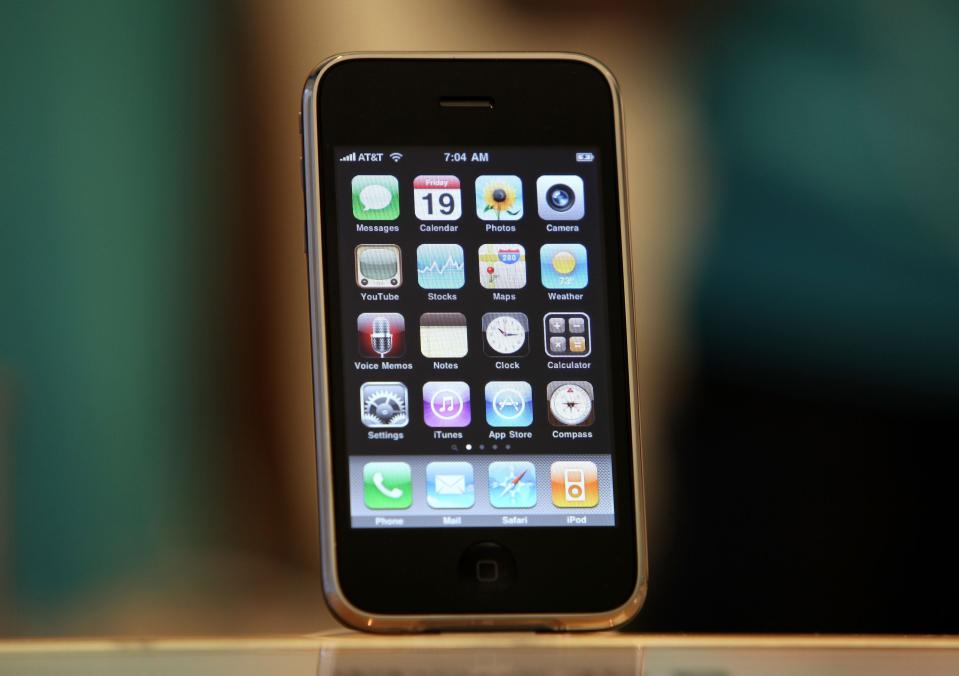
Even from the beginning, Apple was never a fan of naming their products in chronological order, it seems. The iPhone 3G came out in 2008, just one year after the original iPhone release. Named after its ability to use 3G wireless technology (which was quite speedy back then), this model promised not only a faster network experience for users but also an introduction to the Apple App store. Users could download apps made both by Apple and third-party developers. GPS functionality was also added, a big step towards a feature many of us have come to rely on every day.
The 3GS followed in 2009, refining the previous iteration. Boasting a more powerful 600MHz ARM A8 CPU, this model offered longer battery life, a fingerprint resistant screen coating and improvements to the camera. The 3GS had a 3-megapixel autofocus camera, hands-free voice control and improvements to the video-taking process. It also upped storage space, releasing 16 GB and 32 GB models.
The 3G and 3GS sold for $599.
iPhone 4
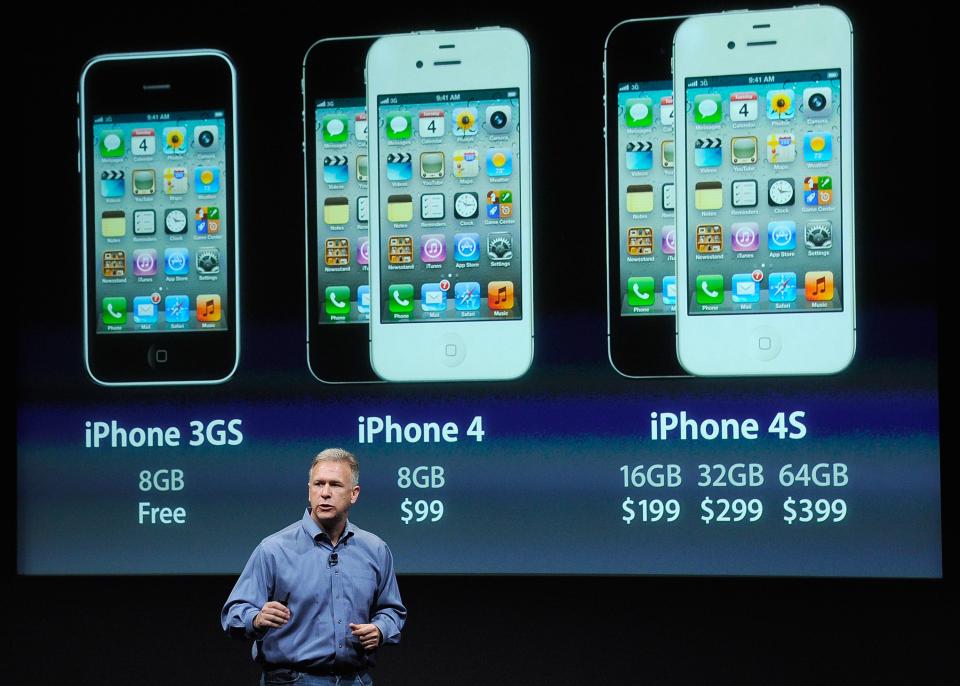
Released in 2010, the iPhone 4 smoothed out some features but sharpened the phone's edges, literally. This model introduced a larger 3.5-inch 960 x 480 resolution screen and Retina display. Apple flattened the phone's curved body and glass, squaring out round edges to make the "thinnest smartphone ever" and create a now-iconic look.
The 4 introduced users to some now fundamental elements, including the front-facing camera and FaceTime. The camera was also upgraded to 5-megapixels with an LED flash. This was also the first time the iPhone would become available to customers of service providers outsides of AT&T.
The 4S was announced by CEO Tim Cook on Oct. 4, 2011, the day before Steve Jobs died. This new model upgraded speed significantly with a new chip and introduced Siri for the first time. Apple also kept with the trend of improving the camera, upgrading to 8-megapixels and introducing the ability to take a photo using the volume button.
The iPhone 4 16 GB was listed for $599 and the 4S 16 GB for $649.
What we know about iPhone 15: What to know about new Apple iPhone 15: Expected release date, features, and more
iPhone 5
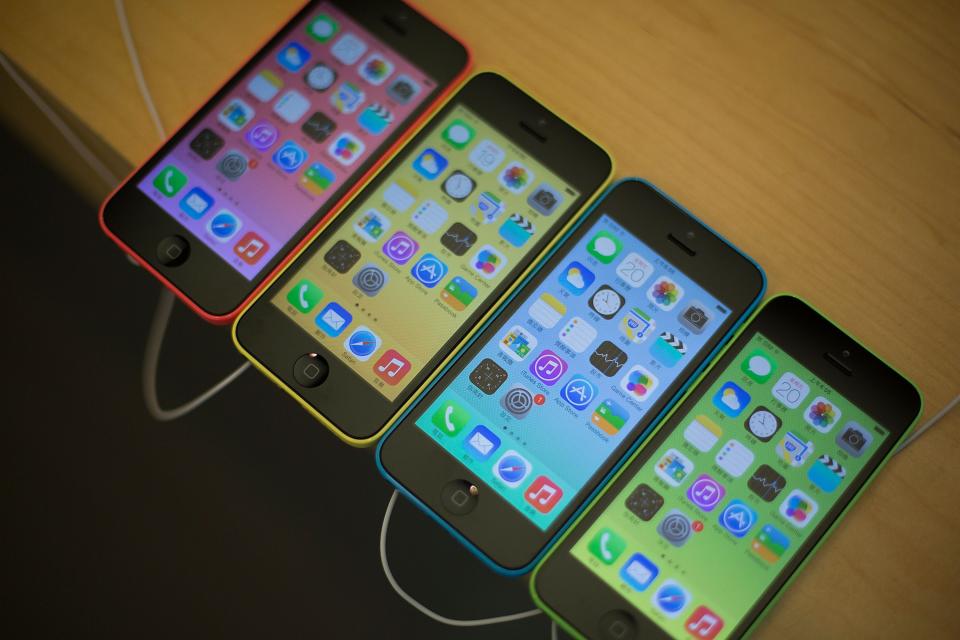
The main iPhone 5 release in 2012 brought a larger 4-inch display with 1136 x 640 resolution, as well as the new Lightning charging connector. The new model was marketed as the most compact one yet, 20% lighter and 18% thinner than the 4S.
The 5S and 5C followed in 2013, the 5S still serving as the "upgraded" version of the 5, including a new processing chip, an 8-megapixel camera, and the addition of Touch ID. However, the C was introduced as a more cost-effective option, with a colorful back made of plastic instead of the iPhone's usual slick glass. It came in colors blue, green, pink, yellow and white.
The iPhone 5 and 5S sold for $649 with 16 GB.
New Apple release: When can you buy the new iPhone 15? Apple announces release date for iPhones, watches
iPhone 6
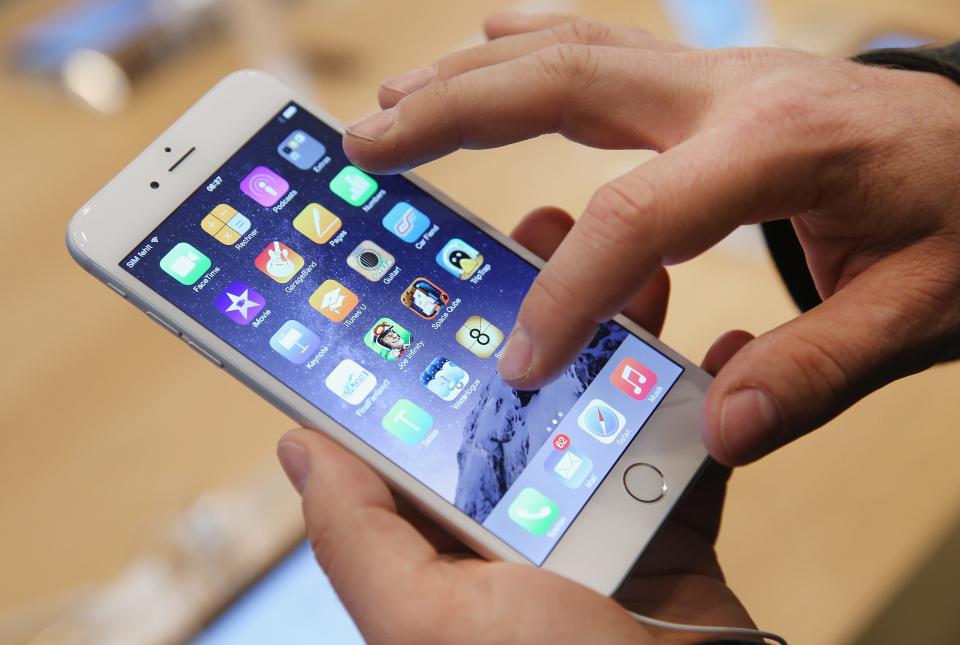
The 2014 iPhones 6 and 6 plus took another big step up with screen size, upgrading to a 4.7-inch 1334 x 640 screen and 5.5-inch screen with 1920 x 1080 resolution. These models switched over to a metal body and longer battery life, along with the now-standard upgrades to performance and camera quality. Notably, Apple Pay was also introduced with this release.
The 6S released in 2015, with upgrades to the metal materials used to make them, allowing for increased durability while keeping the same screen size. The last iPhone to have a headphone jack (people were not happy about that), the 6S also had 3D Touch, which enabled users to access different functions based on how much pressure they applied to the screen.
The iPhone 6 and 6S 16GB sold for $649, while the 6 plus and 6S plus sold for $749.
iPhone SE
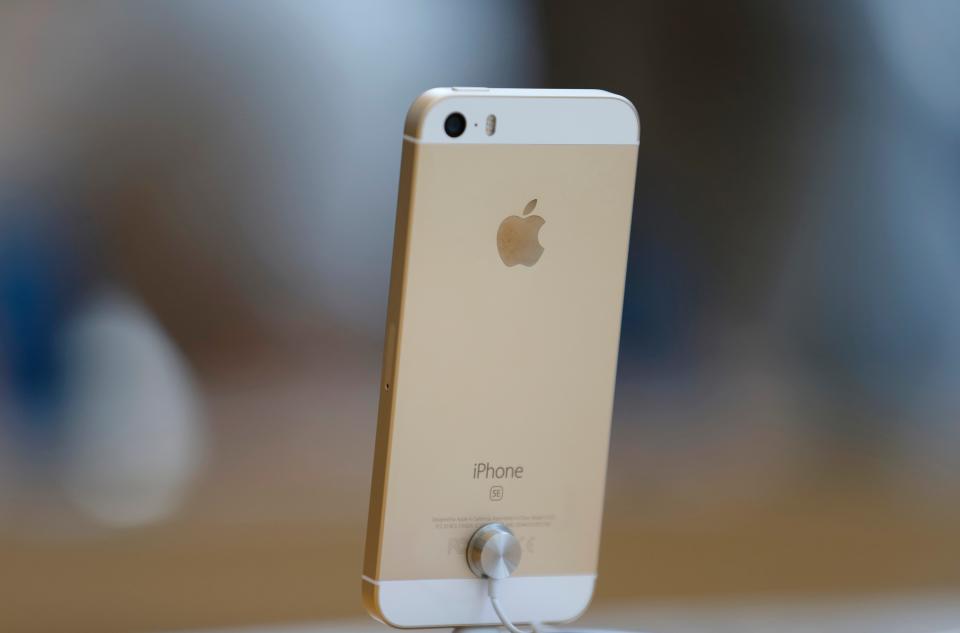
In 2016, Apple took a bit of a step back, releasing a phone more in line with the older 5 design while keeping the more powerful hardware of the 6. While still maintaining features like the 12-megapixel iSight camera, 4K video support, Touch ID and Apple Pay, this model was smaller and cheaper, appealing to people looking not only for a lower price tag, but who prefered a more compact device.
iPhone 7
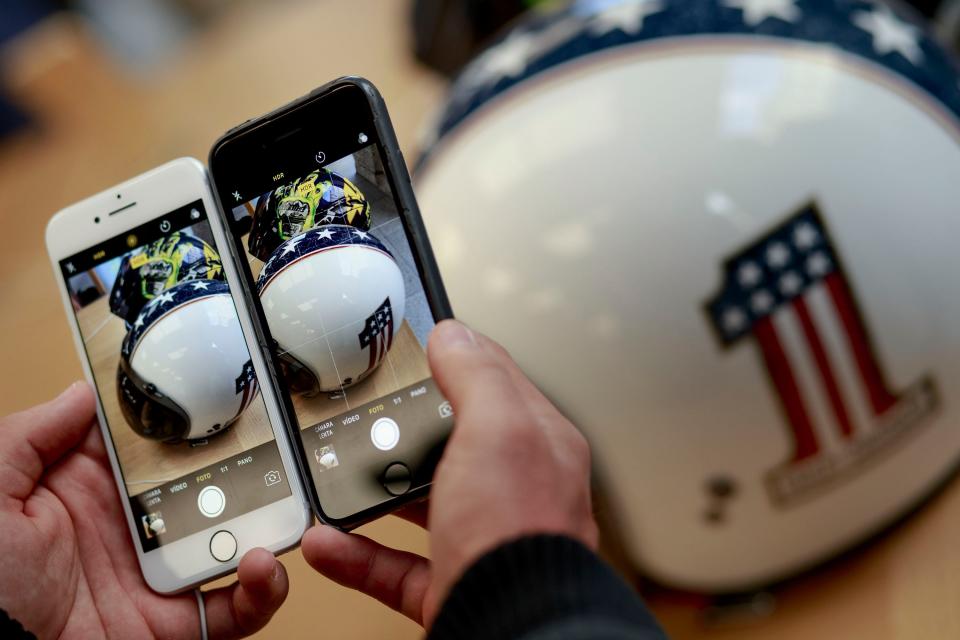
Also released in 2016, this main-stay instillation was the first without a headphone jack, requiring users to either use Bluetooth headphones or plug them into the Lightning jack instead. Those who wanted to charge their phones and use wired headphones at the same time had to purchase a specific adapter. This version, along with the 7 plus, introduced water and dust proofing, stereo speakers and dual cameras as well as typical improvements to the chip and speed.
A 32 GB iPhone 7 went for $649 and the 32 GB 7 Plus for $769.
iPhone 8
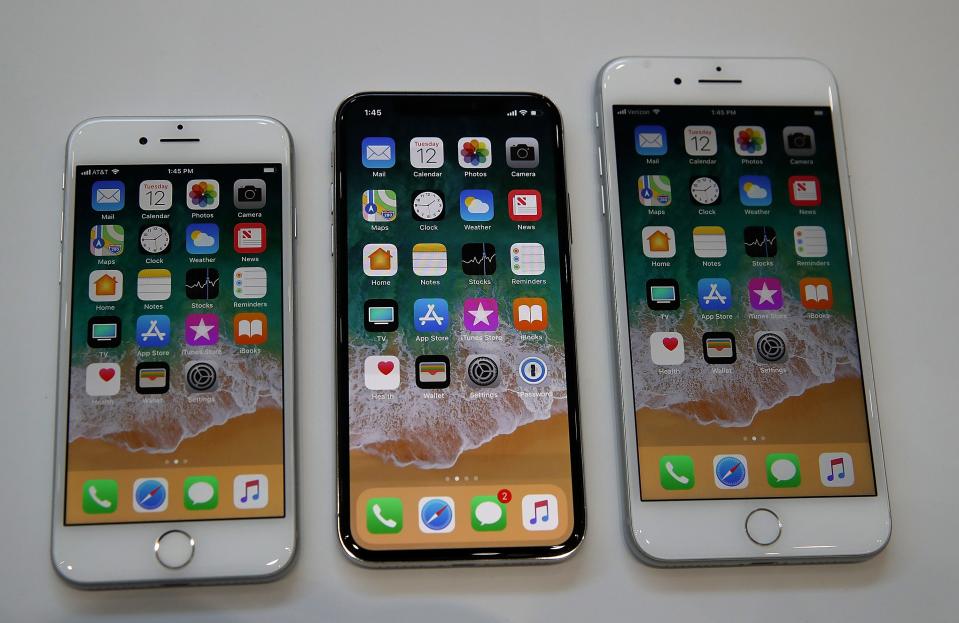
The 8 did not make huge changes when it released in 2017, mostly garnering attention for a body design changed back to glass and aluminum, along with wireless charging. The iPhone 8 Plus made additional tweaks to the camera, offering portrait and augmented reality modes along with the True Touch technology introduced in the 8. The usual upgrades included a doubled storage capacity and a new, faster chip.
The iPhone 8 with 64 GB of storage ran $699, while the plus listed for $799.
iPhone X
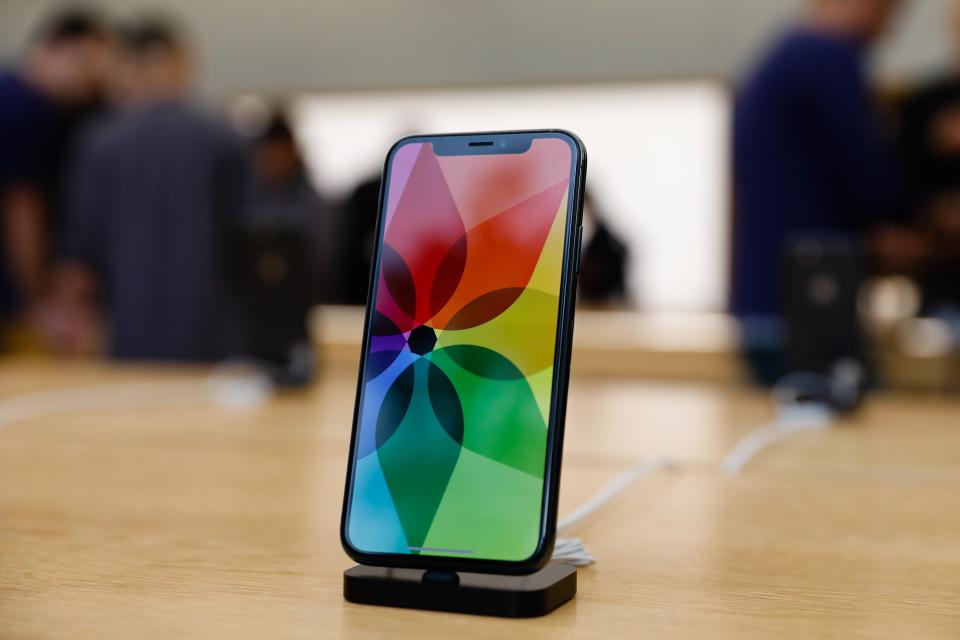
Also released in 2017, the X ushered in a big change for screen size. It had a 5.8-inch display that decreased the margins around the screen to take up minimal space. It also finally did away with the Home button, which had been a physical button in the bottom center of the front screen up until this point. Now, users had to switch to swiping or using Face ID.
The XS, XR and Max released in 2018 also upped screen size compared to the 8, with 5.8-inch and 6.5-inch screens. Also doing away with the physical home button, the following models upped display quality, battery life and the camera. Like the 5C, the XR was released to offer colorful, cheaper alternatives for those on a budget.
The 64 GB iPhone X sold for $999.
iPhone 11
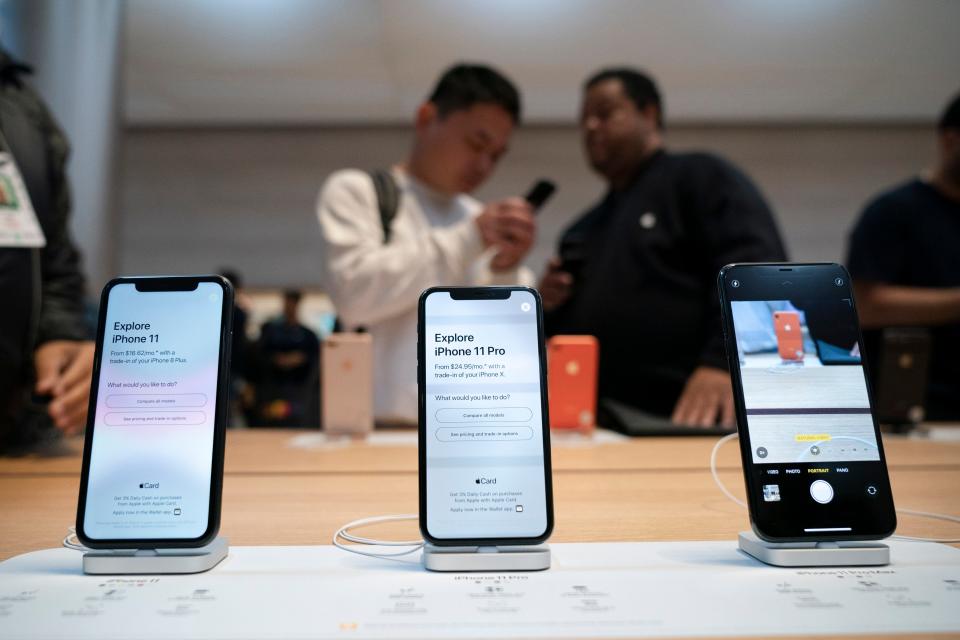
Released in 2019, the iPhone 11 was the same size as the XR but added an additional secondary camera to the back of the phone. Now with wide and ultra-wide camera options, the 6.1-inch display still scratched the large phone screen itch, along with improvements to battery life and new colors to choose from. Like prior models, the 11 also came in Pro or Pro Max versions, offering larger displays, even more battery life, three cameras instead of two and storage up to 512 GB.
The iPhone 11 retailed at $599 for the basic 64GB model.
iPhone 12
The 12 was released in 2020 with the big selling point of 5G capability. The first model capable of tapping into the much speedier 5G network, the 12 stuck with the 6.1-inch display for the standard and Pro models, 6.7-inch for the Pro Max and 5.4 inches for the Mini.
Again, the largest upgrades made were to the camera, along with the basic quality-of-life display and battery improvements. While the iPhone's camera had become the subject of praise with the many and consistent updates, those looking for earth-shattering changes did not find them with this model.
At launch, the basic iPhone 12 listed for $699 for a 64 Gb model.
iPhone 13
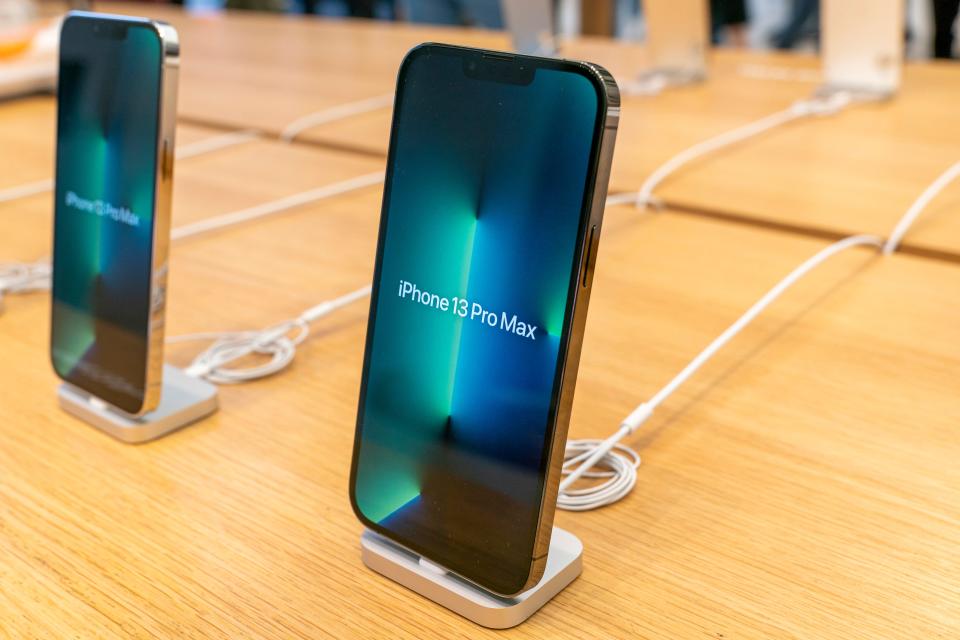
In what has become a trend for later iPhone models, the largest improvements made to the 2021 iPhone 13 concerned the camera. Apple offered a Mini, Normal, Pro and Pro Max versions of the phone, with displays ranging in size from 5.4 to 6.7 inches.
Along with the typical battery life and processing speed upgrades, the new camera was improved for better low-light images and a Cinematic mode for videos, which enabled automatic focus similar to that of portrait mode for photos.
Prices for the 13 ranges from $699 for the Mini and $1,099 for the Pro Max.
iPhone 14 and SE
The iPhone SE and 14 both released in 2022, though neither introduced major changes. The SE was yet another release targeted towards those on a tighter budget, sticking to the 4.7-inch screen. While it largely looked like past models, as no noticeable changes were really made to the exterior, it did offer 5G and other desirable elements of the iPhone 13 for a lower cost.
The 14 offered some of the smallest changes in iPhone history, sticking to essentially the same design inside and out. Besides the improved main camera and a slight bump in battery life, the only other notable changes were the removal of the physical SIM card slot and addition of the Crash Detection feature.
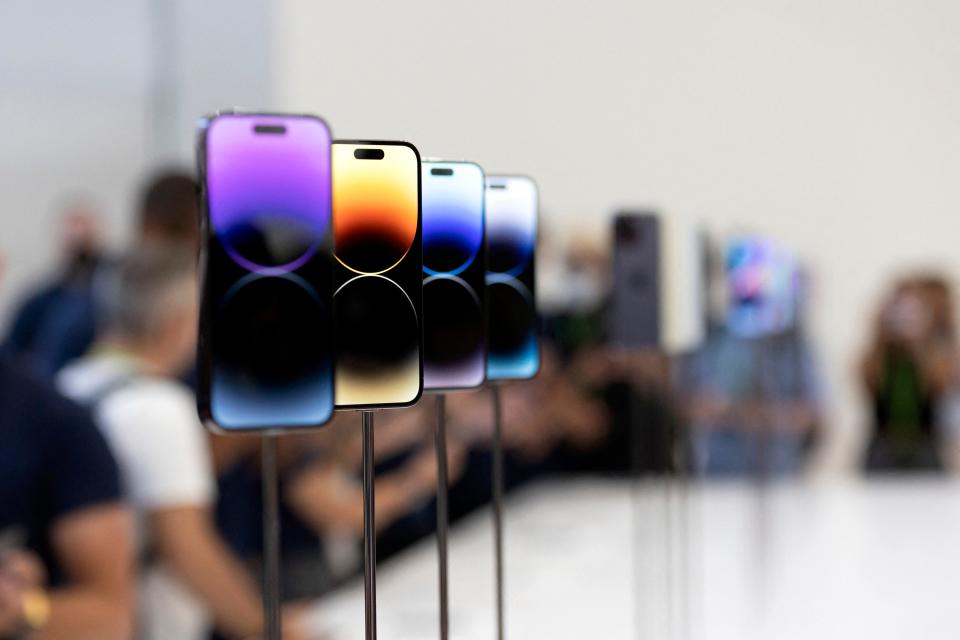
iPhone 15
Apple announced late last month that the new iPhone 15 will be revealed on Sept. 12 at the "Wonderlust" event on the company's campus at 1 p.m. ET.
According to previous reporting by USA TODAY, it is common for Apple to open up preorders the Friday after the event, followed by an iOS update on Monday and the launch of iPhones in stores the following Friday.
Based on this pattern, the new iPhone should be available for preorder Sept. 15. and appear in stores on Sept. 22.
While we can't know for sure until the big reveal, reports have speculated that the Lightning charging port will be replaced by a USB-C port, durable titanium frames may be introduced and the typical upgrades to the camera and processing chip are expected as well.
This article originally appeared on USA TODAY: iPhone evolution: See changes from original to iPhone 14
